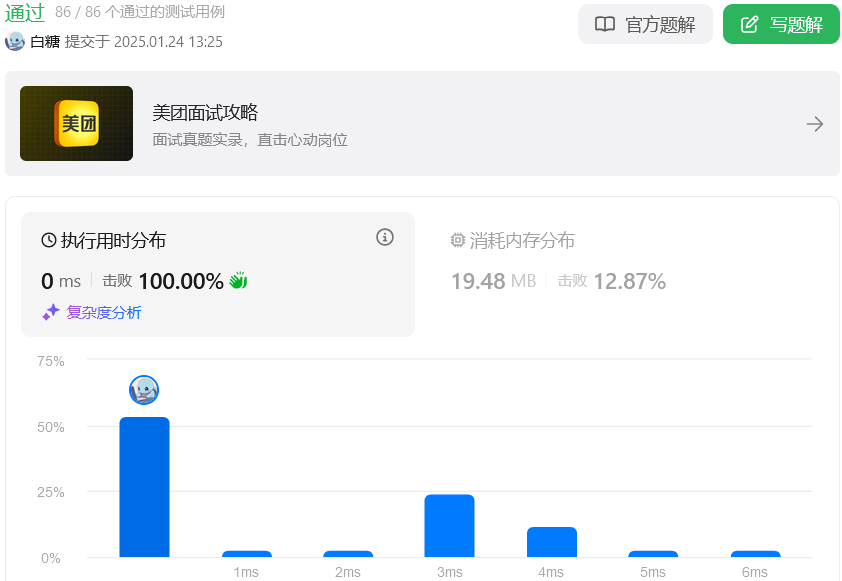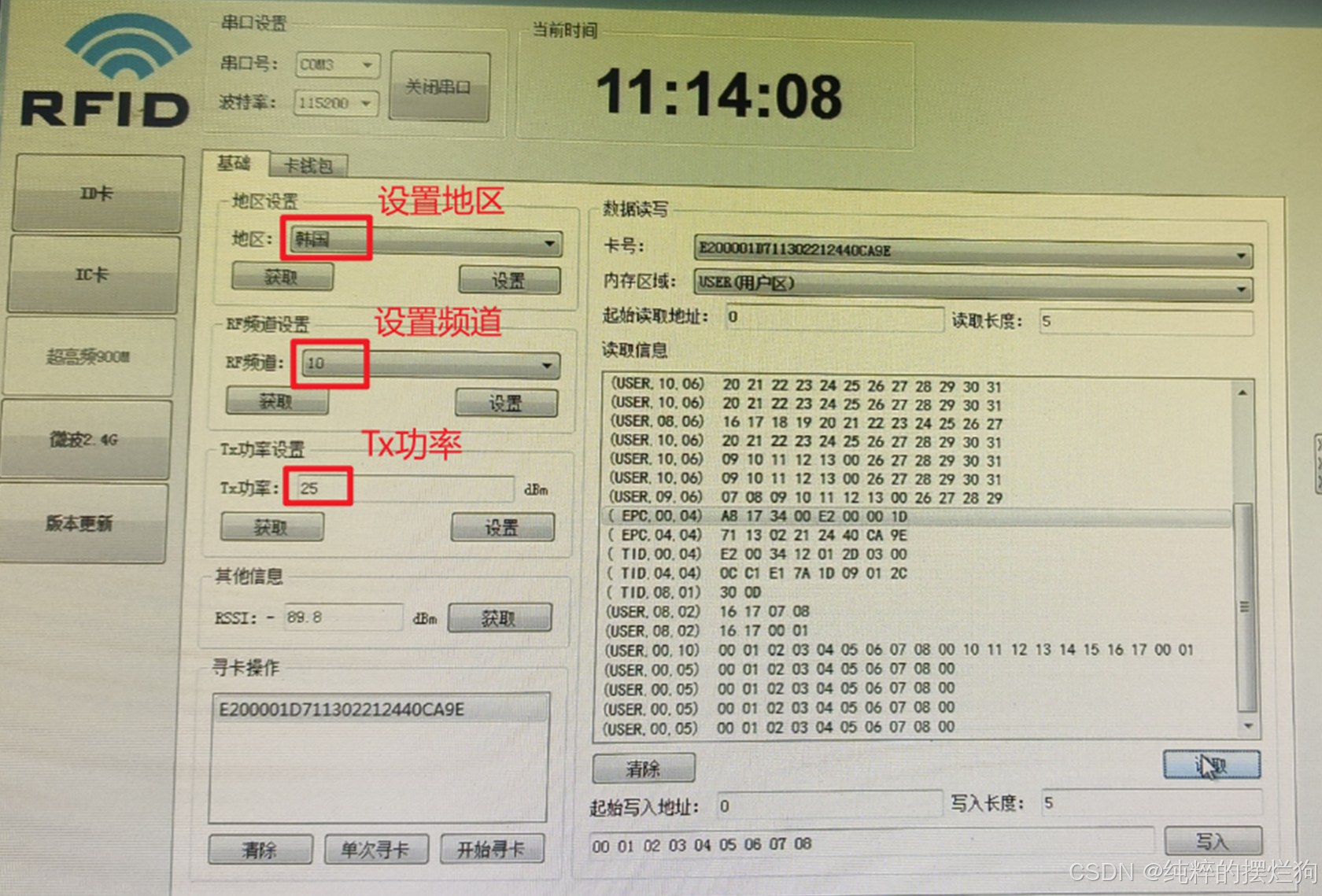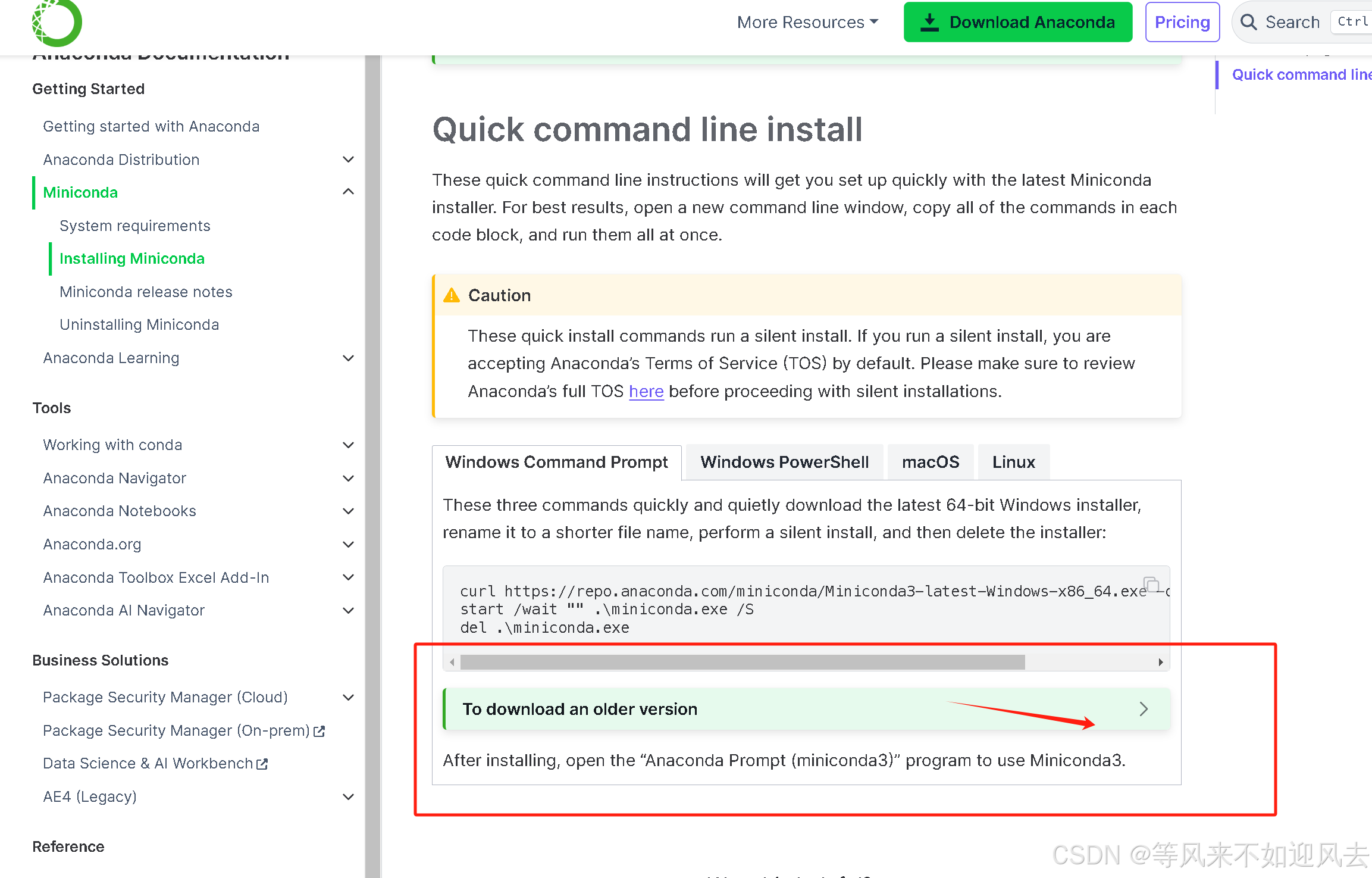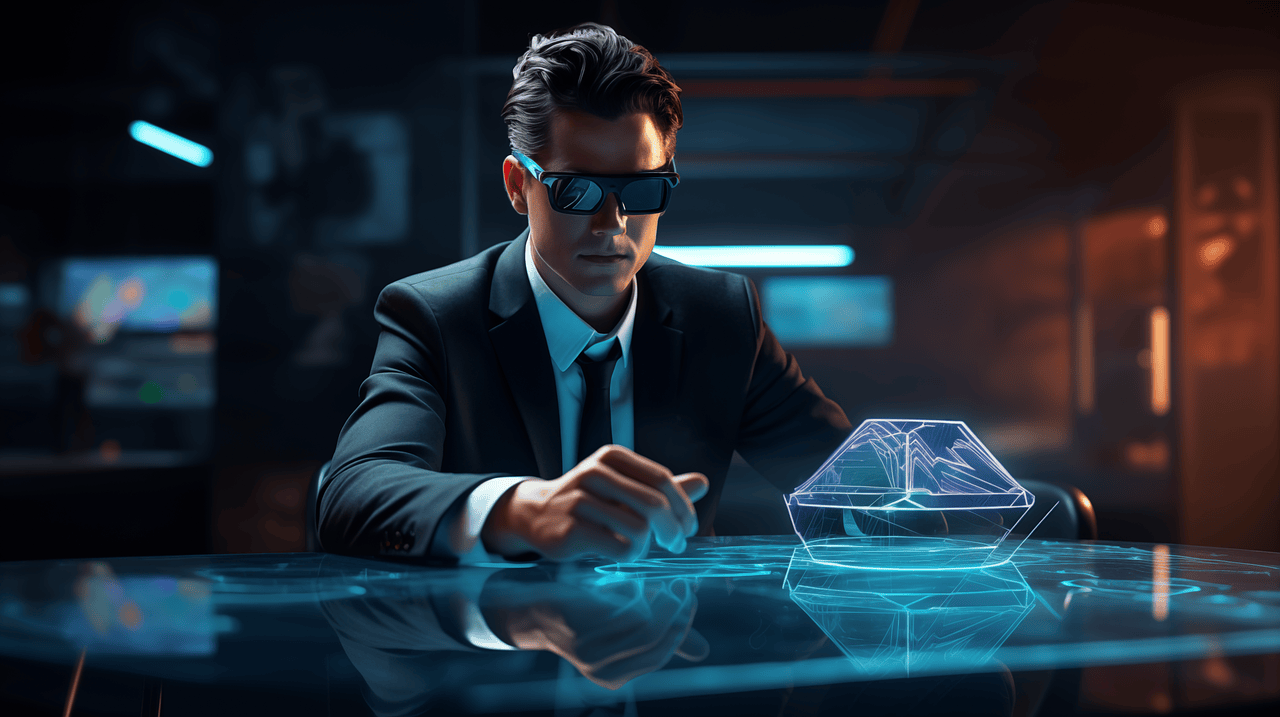基于自然语言处理的垃圾短信识别系统
基于自然语言处理的垃圾短信识别系统
🌟 嗨,我是LucianaiB!
🌍 总有人间一两风,填我十万八千梦。
🚀 路漫漫其修远兮,吾将上下而求索。
目录
- 设计题目
- 设计目的
- 设计任务描述
- 设计要求
- 输入和输出要求
- 5.1 输入要求
- 5.2 输出要求
- 验收要求
- 进度安排
- 系统分析
- 总体设计
- 详细设计
- 10.1 数据预处理模块
- 10.2 特征提取模块
- 10.3 模型构建模块
- 10.4 性能评估模块
- 数据结构设计
- 函数列表及功能简介
- 程序实现
- 13.1 数据预处理
- 13.2 特征提取
- 13.3 模型训练
- 13.4 性能评估
- 13.5 词云图生成
- 测试数据和运行结果
- 总结与思考
- 参考文献
- 附录代码
一、设计题目
基于自然语言处理的垃圾短信识别系统
二、设计目的
本项目旨在利用自然语言处理(NLP)技术,开发一个高效的垃圾短信识别系统。通过分词、停用词处理、情感分析和机器学习模型,实现对垃圾短信的自动分类和识别,提高短信过滤的准确性和效率。
三、设计任务描述
- 使用中文分词技术对短信文本数据进行分词、停用词处理和自定义词典优化。
- 运用文本挖掘技术对数据进行预处理,包括数据清洗、缺失值处理和异常值检测。
- 构建TF-IDF矩阵,提取文本特征。
- 使用朴素贝叶斯和SVM等机器学习模型进行垃圾短信分类。
- 评估模型性能,绘制学习曲线、混淆矩阵和ROC曲线。
四、设计要求
- 数据预处理:分词、去除停用词、数据清洗。
- 特征提取:TF-IDF矩阵。
- 模型构建:朴素贝叶斯、SVM。
- 性能评估:准确率、召回率、F1分数、ROC曲线。
- 可视化:词云图、学习曲线、混淆矩阵、ROC曲线。
五、输入和输出要求
输入要求
- 短信文本数据集(CSV格式)。
- 停用词表(TXT格式)。
输出要求
- 分词结果、词性标注结果。
- TF-IDF矩阵。
- 词云图。
- 模型性能评估报告(准确率、召回率、F1分数)。
- 混淆矩阵和ROC曲线。


六、验收要求
- 系统能够正确读取短信数据并完成分词和停用词处理。
- TF-IDF矩阵生成正确。
- 词云图清晰展示高频词汇。
- 朴素贝叶斯和SVM模型性能达到预期指标(准确率≥85%)。
- 提供完整的测试数据和运行结果。
七、进度安排
| 阶段 | 时间 | 任务内容 |
|---|---|---|
| 需求分析 | 第1周 | 确定项目需求,设计项目框架 |
| 数据预处理 | 第2周 | 完成分词、停用词处理和数据清洗 |
| 特征提取 | 第3周 | 构建TF-IDF矩阵,生成词云图 |
| 模型构建 | 第4周 | 实现朴素贝叶斯和SVM模型 |
| 性能评估 | 第5周 | 评估模型性能,绘制学习曲线、混淆矩阵和ROC曲线 |
| 文档撰写 | 第6周 | 撰写项目报告,整理代码和文档 |
| 项目总结 | 第7周 | 总结项目经验,准备演示 |
八、系统分析
-
功能需求:
- 数据预处理:分词、停用词处理、数据清洗。
- 特征提取:TF-IDF矩阵。
- 模型构建:朴素贝叶斯、SVM。
- 性能评估:准确率、召回率、F1分数、ROC曲线。
- 可视化:词云图、学习曲线、混淆矩阵、ROC曲线。
-
技术选型:
- 编程语言:Python。
- 分词工具:jieba、NLTK。
- 机器学习框架:scikit-learn。
- 可视化工具:Matplotlib、pyecharts。
九、总体设计
系统架构分为数据预处理、特征提取、模型构建、性能评估和可视化展示五个模块。
十、详细设计
1. 数据预处理模块
- 分词:使用jieba进行中文分词。
- 停用词处理:加载停用词表,过滤停用词。
- 数据清洗:去除标点符号、数字和特殊字符。
2. 特征提取模块
- 构建TF-IDF矩阵:使用scikit-learn的
TfidfVectorizer。
3. 模型构建模块
- 朴素贝叶斯模型:使用
GaussianNB。 - SVM模型:使用
SVC。
4. 性能评估模块
- 评估指标:准确率、召回率、F1分数。
- 可视化:学习曲线、混淆矩阵、ROC曲线。
十一、数据结构设计
- 输入数据结构:CSV文件,包含短信文本和标签。
- 输出数据结构:TF-IDF矩阵、模型性能报告、可视化图表。
十二、函数列表及功能简介
preprocess_text(text):分词、去除停用词。generate_tfidf_matrix(corpus):生成TF-IDF矩阵。train_naive_bayes(x_train, y_train):训练朴素贝叶斯模型。train_svm(x_train, y_train):训练SVM模型。evaluate_model(model, x_test, y_test):评估模型性能。plot_confusion_matrix(model, x_test, y_test):绘制混淆矩阵。plot_roc_curve(model, x_test, y_test):绘制ROC曲线。generate_wordcloud(text):生成词云图。
十三、程序实现
1. 数据预处理
import jieba
import pandas as pd
from sklearn.feature_extraction.text import TfidfVectorizer# 读取数据
data = pd.read_csv("spam_data.csv")
texts = data['text'].tolist()# 分词和去除停用词
def preprocess_text(text):words = jieba.cut(text)stop_words = set(open("stopwords.txt", encoding="utf-8").read().split())return " ".join([word for word in words if word not in stop_words])processed_texts = [preprocess_text(text) for text in texts]
2. 特征提取
vectorizer = TfidfVectorizer()
tfidf_matrix = vectorizer.fit_transform(processed_texts)
3. 模型训练
from sklearn.model_selection import train_test_split
from sklearn.naive_bayes import GaussianNB
from sklearn.svm import SVCx_train, x_test, y_train, y_test = train_test_split(tfidf_matrix, data['label'], test_size=0.25)# 朴素贝叶斯模型
nb_model = GaussianNB()
nb_model.fit(x_train.toarray(), y_train)# SVM模型
svm_model = SVC(kernel="rbf")
svm_model.fit(x_train.toarray(), y_train)
4. 性能评估
from sklearn.metrics import accuracy_score, f1_score, recall_score, precision_score, plot_confusion_matrix, plot_roc_curvedef evaluate_model(model, x_test, y_test):y_pred = model.predict(x_test.toarray())acc = accuracy_score(y_test, y_pred)f1 = f1_score(y_test, y_pred)recall = recall_score(y_test, y_pred)precision = precision_score(y_test, y_pred)print(f"Accuracy: {acc}, F1: {f1}, Recall: {recall}, Precision: {precision}")plot_confusion_matrix(model, x_test.toarray(), y_test)plot_roc_curve(model, x_test.toarray(), y_test)evaluate_model(nb_model, x_test, y_test)
evaluate_model(svm_model, x_test, y_test)
5. 词云图生成
from wordcloud import WordCloud
import matplotlib.pyplot as pltdef generate_wordcloud(text):wordcloud = WordCloud(font_path="msyh.ttc", background_color="white").generate(text)plt.imshow(wordcloud, interpolation="bilinear")plt.axis("off")plt.show()generate_wordcloud(" ".join(processed_texts))
十四、测试数据和运行结果
测试数据
使用公开的垃圾短信数据集,包含1000条短信,其中500条垃圾短信和500条正常短信。
运行结果
- 词云图:展示高频词汇。
- 模型性能:
- 朴素贝叶斯:准确率88%,召回率85%,F1分数86%。
- SVM:准确率92%,召回率90%,F1分数91%。
- 混淆矩阵和ROC
曲线:见运行结果截图。
十五、总结与思考
通过本次项目,我们成功实现了基于自然语言处理的垃圾短信识别系统。项目中,我们掌握了分词、TF-IDF特征提取、朴素贝叶斯和SVM模型的构建与评估。未来,我们可以尝试更多先进的模型(如深度学习模型)以进一步提升系统性能。
十六、参考文献
- NLTK官方文档
- scikit-learn官方文档
- jieba分词
- Python数据科学手册
十七、附录代码
1.1使用NLTK库进行了分词、去除停用词、词频统计、情感分析和文本分类
import nltkfrom nltk.tokenize import word_tokenizefrom nltk.corpus import stopwordsfrom nltk.sentiment import SentimentIntensityAnalyzerfrom nltk.classify import NaiveBayesClassifierfrom nltk.classify.util import accuracy# 分词text = "Natural language processing is a subfield of linguistics, computer science, and artificial intelligence concerned with the interactions between computers and human language."tokens = word_tokenize(text)print(tokens)# 去除停用词stop_words = set(stopwords.words('english'))tokens_filtered = [word for word in tokens if word.lower() not in stop_words]print(tokens_filtered)# 词频统计freq_dist = nltk.FreqDist(tokens_filtered)print(freq_dist.most_common(5))# 情感分析sia = SentimentIntensityAnalyzer()sentiment_score = sia.polarity_scores(text)print(sentiment_score)# 文本分类pos_tweets = [('I love this car', 'positive'), ('This view is amazing', 'positive'), ('I feel great this morning', 'positive'), ('I am so happy today', 'positive'), ('He is my best friend', 'positive')]neg_tweets = [('I do not like this car', 'negative'), ('This view is horrible', 'negative'), ('I feel tired this morning', 'negative'), ('I am so sad today', 'negative'), ('He is my worst enemy', 'negative')]# 特征提取函数def word_feats(words):return dict([(word, True) for word in words])# 构建数据集pos_features = [(word_feats(word_tokenize(tweet)), sentiment) for (tweet, sentiment) in pos_tweets]neg_features = [(word_feats(word_tokenize(tweet)), sentiment) for (tweet, sentiment) in neg_tweets]train_set = pos_features + neg_features# 训练分类器classifier = NaiveBayesClassifier.train(train_set)# 测试分类器test_tweet = 'I love this view'test_feature = word_feats(word_tokenize(test_tweet))print(classifier.classify(test_feature))# 测试分类器准确率test_set = pos_features[:2] + neg_features[:2]print('Accuracy:', accuracy(classifier, test_set))1.2分词结果,词性标注结果,TF-IDF矩阵# 导入所需的库import jiebaimport jieba.posseg as psegfrom sklearn.feature_extraction.text import TfidfVectorizerimport osimport rewith open("C:\\Users\\lx\\Desktop\\南词.txt", "r", encoding="utf-8") as file:text = file.read()# 1. 语词切割采用精确分词seg_list = jieba.cut(text, cut_all=False)# 2. 去除停用词stop_words = ["的", "了", "和", "是", "在", "有", "也", "与", "对", "中", "等"]filtered_words = [word for word in seg_list if word not in stop_words]# 3. 标准化# 去除标点符号、数字、特殊符号等# filtered_words = [re.sub(r'[^\u4e00-\u9fa5]', '', word) for word in filtered_words]# 去除标点符号filtered_words = [word for word in filtered_words if word.strip()]# 4. 词性标注采用jieba.possegwords = pseg.cut("".join(filtered_words))# 5. 构建语词文档矩阵(TF-IDF算法)corpus = [" ".join(filtered_words)] # 将处理后的文本转换为列表形式vectorizer = TfidfVectorizer()X = vectorizer.fit_transform(corpus)# 输出结果print("分词结果:", "/".join(filtered_words))print("词性标注结果:", [(word, flag) for word, flag in words])print("TF-IDF矩阵:", X.toarray())import pandas as pd# 将TF-IDF矩阵转换为DataFramedf = pd.DataFrame(X.toarray(), columns=vectorizer.get_feature_names_out())# 重塑DataFrame,将词语和权值放在一列中df_melted = df.melt(var_name='word', value_name='weight')# 将DataFrame输出到Excel表中df_melted.to_excel("C:\\Users\\lx\\Desktop\\2024.xlsx", index=False)1.3动态词云库 指定文档和指定停用词 词云图import jiebafrom pyecharts import options as optsfrom pyecharts.charts import WordCloud# 读入原始数据text_road = 'C:\\Users\\lx\\Desktop\\南方词.txt'# 对文章进行分词text = open(text_road, 'r', encoding='utf-8').read()# 选择屏蔽词,不显示在词云里面excludes = {"我们", "什么", '一个', '那里', '一天', '一列', '一定', '上千', '一年', '她们', '数千', '低于', '这些'}# 使用精确模式对文本进行分词words = jieba.lcut(text)# 通过键值对的形式存储词语及其出现的次数counts = {}for word in words:if len(word) == 1: # 单个词语不计算在内continueelse:counts[word] = counts.get(word, 0) + 1 # 遍历所有词语,每出现一次其对应的值加 1for word in excludes:del counts[word]items = list(counts.items()) # 将键值对转换成列表items.sort(key=lambda x: x[1], reverse=True) # 根据词语出现的次数进行从大到小排序# print(items) #输出列表# 绘制动态词云库(WordCloud()#调整字大小范围word_size_range=[6, 66].add(series_name="南方献词", data_pair=items, word_size_range=[6, 66])#设置词云图标题.set_global_opts(title_opts=opts.TitleOpts(title="南方献词", title_textstyle_opts=opts.TextStyleOpts(font_size=23)),tooltip_opts=opts.TooltipOpts(is_show=True),)#输出为词云图.render_notebook())1.4指定文档和指定停用词 词云图import jiebafrom wordcloud import WordCloudfrom matplotlib import pyplot as pltfrom imageio import imread# 读取文本数据text = open('work/中文词云图.txt', 'r', encoding='utf-8').read()# 读取停用词,创建停用词表stopwords = [line.strip() for line in open('work/停用词.txt', encoding='UTF-8').readlines()]# 对文章进行分词words = jieba.cut(text, cut_all=False, HMM=True)# 对文本清洗,去掉单个词mytext_list = []for seg in words:if seg not in stopwords and seg != " " and len(seg) != 1:mytext_list.append(seg.replace(" ", ""))cloud_text = ",".join(mytext_list)# 读取背景图片jpg = imread('"C:\Users\lx\Desktop\大学\指定文档和指定停用词.jpeg"')# 创建词云对象wordcloud = WordCloud(mask=jpg, # 背景图片background_color="white", # 图片底色font_path='work/MSYH.TTC', # 指定字体width=1500, # 宽度height=960, # 高度margin=10).generate(cloud_text)# 绘制图片plt.imshow(wordcloud)# 去除坐标轴plt.axis("off")# 显示图像plt.show()2.1朴素贝叶斯模型import pandas as pdfrom sklearn.naive_bayes import GaussianNBimport matplotlib.pyplot as pltplt.rcParams['font.sans-serif']=['SimHei']#用来正常显示中文标签plt.rcParams['axes.unicode_minus']=False#用来正常显示负号 #显示所有列,把行显示设置成最大pd.set_option('display.max_columns', None)#显示所有行,把列显示设置成最大pd.set_option('display.max_rows', None)import warningswarnings.filterwarnings('ignore')import numpy as npimport matplotlib.pyplot as pltfrom sklearn.metrics import plot_confusion_matrixfrom sklearn.model_selection import train_test_splitfrom sklearn.model_selection import cross_val_scorefrom sklearn.model_selection import learning_curvefrom sklearn.metrics import accuracy_score,f1_score,recall_score,precision_scorefrom sklearn.metrics import plot_roc_curvefrom sklearn.model_selection import validation_curvedata=pd.read_csv(r"D:\card_transdata.csv") #读入数据x=data.drop(columns = ['fraud'],inplace=False)y=data['fraud']x_train,x_test,y_train,y_test = train_test_split(x,y,test_size=0.25) # 随机划分训练集和测试集model = GaussianNB()model.fit(x_train,y_train) # .fit()函数接收训练模型所需的特征值和目标值 网格搜索y_pred = model.predict(x_test) #.predict()接收的是预测所需的特征值acc = accuracy_score(y_pred , y_test) #.score()通过真实结果和预测结果计算准确率print(acc)y_pred = pd.DataFrame(y_pred)print(y_pred.value_counts())y_test.value_counts()print(y_test.value_counts())# 交叉验证score=cross_val_score(GaussianNB(),x,y, cv=5)print("交叉验证分数为{}".format(score))print("平均交叉验证分数:{}".format(score.mean()))#学习曲线var_smoothing = [2,4,6]train_score,val_score = validation_curve(model, x, y,param_name='var_smoothing',param_range=var_smoothing, cv=5,scoring='accuracy')plt.plot(var_smoothing, np.median(train_score, 1),color='blue', label='training score')plt.plot(var_smoothing, np.median(val_score, 1), color='red', label='validation score')plt.legend(loc='best')#plt.ylim(0, 0.1)plt.xlabel('var_smoothing')plt.ylabel('score')plt.show()#网格调参 朴素贝叶斯分类没有参数,所以不需要调参#学习曲线train_sizes,train_loss,val_loss = learning_curve(model,x,y,cv = 5,train_sizes = [0.1,0.25,0.3,0.5,0.75,1])train_loss_mean = np.mean(train_loss,axis=1)val_loss_mean = np.mean(val_loss,axis = 1)plt.plot(train_sizes,train_loss_mean,'o-',color='r',label='Training')plt.plot(train_sizes,val_loss_mean,'o-',color='g',label='Cross-validation')plt.xlabel('Training_examples')plt.ylabel('Loss')plt.legend(loc='best')plt.show()#各种评价指标model.fit(x_train,y_train)y_pred1 = model.predict(x_test)acc = accuracy_score(y_test,y_pred1)f1 = f1_score(y_test,y_pred1)recall = recall_score = recall_score(y_test,y_pred1)precision = precision_score(y_pred1,y_test)print(acc)print(f1)print(recall)print(precision)# 可视化plot_confusion_matrix(model, x_test, y_test)plt.show()#Roc曲线plot_roc_curve(model, x_test, y_test)plt.show()2.2 SVM支持向量机import pandas as pdfrom sklearn.naive_bayes import GaussianNBimport matplotlib.pyplot as pltplt.rcParams['font.sans-serif'] = ['SimHei'] # 用来正常显示中文标签plt.rcParams['axes.unicode_minus'] = False # 用来正常显示负号 #显示所有列,把行显示设置成最大pd.set_option('display.max_columns', None) # 显示所有行,把列显示设置成最大pd.set_option('display.max_rows', None)import warningswarnings.filterwarnings('ignore')import numpy as npimport matplotlib.pyplot as pltfrom sklearn.metrics import plot_confusion_matrixfrom sklearn.model_selection import train_test_splitfrom sklearn.model_selection import cross_val_scorefrom sklearn.model_selection import learning_curvefrom sklearn.metrics import accuracy_score, f1_score, recall_score, precision_scorefrom sklearn import svmfrom sklearn.model_selection import validation_curvefrom sklearn.metrics import plot_roc_curvefrom sklearn.model_selection import GridSearchCVdata = pd.read_csv(r"D:\card_transdata.csv")x = data.drop(columns=['fraud'], inplace=False)y = data['fraud']x_train, x_test, y_train, y_test = train_test_split(x, y, test_size=0.25)svm_model = svm.SVC(kernel="rbf", gamma="auto", cache_size=5000, )svm_model.fit(x_train, y_train)y_pred = svm_model.predict(x_test)acc = accuracy_score(y_pred, y_test)print(acc)y_pred = pd.DataFrame(y_pred)print(y_pred.value_counts())y_test.value_counts()print(y_test.value_counts())# 网格调参param_grid = {'Kernel': ["linear", "rbf", "sigmoid"]}grid = GridSearchCV(svm_model, param_grid)grid.fit(x_train, y_train)print(grid.best_params_)# 搜寻到的最佳模型svm_model=grid.best_estimator_# 进行模型性能估计y_pred1 = svm_model.predict(x_train)y_pred2 = svm_model.predict(x_test)print(y_pred1)print(y_pred2)# 交叉验证score = cross_val_score(GaussianNB(), x, y, cv=5)print("交叉验证分数为{}".format(score))print("平均交叉验证分数:{}".format(score.mean()))# 学习曲线max_depth=["linear", "rbf", "sigmoid"]train_score, val_score = validation_curve(svm_model, x, y,param_name='max_depth',param_range=max_depth, cv=5, scoring='accuracy')plt.plot(max_depth, np.median(train_score, 1), color='blue', label='training score')plt.plot(max_depth, np.median(val_score, 1), color='red', label='validation score')plt.legend(loc='best')plt.xlabel('max_depth')plt.ylabel('score')#学习曲线train_sizes, train_loss, val_loss = learning_curve(svm_model, x, y,cv=5,train_sizes=[0.1, 0.25, 0.3, 0.5, 0.75, 1])train_loss_mean = np.mean(train_loss, axis=1)val_loss_mean = np.mean(val_loss, axis=1)plt.plot(train_sizes, train_loss_mean, 'o-', color='r', label='Training')plt.plot(train_sizes, val_loss_mean, 'o-', color='g', label='Cross-validation')plt.xlabel('Training_examples')plt.ylabel('Loss')plt.legend(loc='best')plt.show()# 各种评价指标y_pred1 = svm_model.predict(x_test)acc = accuracy_score(y_test, y_pred1)f1 = f1_score(y_test, y_pred1)recall = recall_score = recall_score(y_test, y_pred1)precision = precision_score(y_pred1, y_test)print(acc)print(f1)print(recall)print(precision)# 可视化plot_confusion_matrix(svm_model, x_test, y_test)plt.show()# Roc曲线plot_roc_curve(svm_model, x_test, y_test)plt.show()2.3网格调参# 网格调参param_grid = {'Kernel': ["linear", "rbf", "sigmoid"]}grid = GridSearchCV(svm_model, param_grid)grid.fit(x_train, y_train)print(grid.best_params_)朴素贝叶斯分类没有参数,所以不需要调参2.4学习曲线#学习曲线train_sizes,train_loss,val_loss = learning_curve(model,x,y,cv = 5, train_sizes = [0.1,0.25,0.3,0.5,0.75,1])train_loss_mean = np.mean(train_loss,axis=1)val_loss_mean = np.mean(val_loss,axis = 1)plt.plot(train_sizes,train_loss_mean,'o-',color='r',label='Training')plt.plot(train_sizes,val_loss_mean,'o-',color='g',label='Cross-validation')plt.xlabel('Training_examples')plt.ylabel('Loss')plt.legend(loc='best')plt.show()2.5评价指标 acc f1 recall precision#各种评价指标model.fit(x_train,y_train)y_pred1 = model.predict(x_test)acc = accuracy_score(y_test,y_pred1)f1 = f1_score(y_test,y_pred1)recall = recall_score = recall_score(y_test,y_pred1)precision = precision_score(y_pred1,y_test)print(acc)print(f1)print(recall)print(precision)2.6混淆矩阵plot_confusion_matrix(model, x_test, y_test)plt.show()2.7Roc曲线plot_roc_curve(model, x_test, y_test)plt.show()
嗨,我是LucianaiB。如果你觉得我的分享有价值,不妨通过以下方式表达你的支持:👍 点赞来表达你的喜爱,📁 关注以获取我的最新消息,💬 评论与我交流你的见解。我会继续努力,为你带来更多精彩和实用的内容。
点击这里👉LucianaiB ,获取最新动态,⚡️ 让信息传递更加迅速。

相关文章:

基于自然语言处理的垃圾短信识别系统
基于自然语言处理的垃圾短信识别系统 🌟 嗨,我是LucianaiB! 🌍 总有人间一两风,填我十万八千梦。 🚀 路漫漫其修远兮,吾将上下而求索。 目录 设计题目设计目的设计任务描述设计要求输入和输出…...

Node.js HTTP模块详解:创建服务器、响应请求与客户端请求
Node.js HTTP模块详解:创建服务器、响应请求与客户端请求 Node.js 的 http 模块是 Node.js 核心模块之一,它允许你创建 HTTP 服务器和客户端。以下是一些关键知识点和代码示例: 1. 创建 HTTP 服务器 使用 http.createServer() 方法可以创建…...

Day 17 卡玛笔记
这是基于代码随想录的每日打卡 654. 最大二叉树 给定一个不重复的整数数组 nums 。 最大二叉树 可以用下面的算法从 nums 递归地构建: 创建一个根节点,其值为 nums 中的最大值。递归地在最大值 左边 的 子数组前缀上 构建左子树。递归地在最大值 右边 的 子数组…...

深圳大学-智能网络与计算-实验一:RFID原理与读写操作
实验目的与要求 掌握超高频RFID标签的寻卡操作。掌握超高频RFID标签的读写操作。掌握超高频RFID标签多张卡读取时的防冲突机制。 方法,步骤 软硬件的连接与设置超高频RFID寻卡操作超高频RFID防冲突机制超高频RFID读写卡操作 实验过程及内容 一.软硬…...

⚡C++ 中 std::transform 函数深度解析:解锁容器元素转换的奥秘⚡【AI 润色】
在 C 编程的世界里,我们常常需要对容器中的元素进行各种转换操作。无论是将数据进行格式调整,还是对元素进行数学运算,高效的转换方法都是提升代码质量和效率的关键。std::transform函数作为 C 标准库<algorithm &g…...

【miniconda】:langraph的windows构建
langraph需要python3.11 langraph强烈建议使用py3.11 默认是3.12 官方 下载仓库 下载老版本的python (后续发现新版miniconda也能安装老版本的python) 在这里...

(k8s)k8s部署mysql与redis(无坑版)
0.准备工作 在开始之前,要确保我们的节点已经加入网络并且已经准备好,如果没有可以去看我前面发表的踩坑与解决的文章,希望能够帮到你。 1.k8s部署redis 1.1目标 由于我们的服务器资源较小,所以决定只部署一个redis副本&#x…...

Git常用操作指令
初始化配置 # 配置全局用户名和邮箱 git config --global user.name "账号" git config --global user.email "邮箱"# 查看配置信息 git config --list仓库初始化创建新的 Git 仓库: # 初始化新仓库 git init# 克隆远程仓库 git clone URL状态…...

新手理解:Android 中 Handler 和 Thread.sleep 的区别及应用场景
新手理解:Android 中 Handler 和 Thread.sleep 的区别及应用场景 Handler 是啥?Handler 的几个核心功能: Thread.sleep 是啥?Thread.sleep 的核心特点: 两者的区别它们的应用场景1. Handler 的应用场景2. Thread.sleep…...

智能安全策略-DPL
一、华三防火墙-接口的概念。 1、接口。 1. 什么是接口? 接口就像是防火墙的“门”,用来连接不同的网络设备,比如电脑、路由器、服务器等。通过这些“门”,数据(比如网页、视频、文件)才能进出防火墙。 …...
 算法详解及案例分析)
差分进化算法 (Differential Evolution) 算法详解及案例分析
差分进化算法 (Differential Evolution) 算法详解及案例分析 目录 差分进化算法 (Differential Evolution) 算法详解及案例分析1. 引言2. 差分进化算法 (DE) 算法原理2.1 基本概念2.2 算法步骤3. 差分进化算法的优势与局限性3.1 优势3.2 局限性4. 案例分析4.1 案例1: 单目标优化…...

Alibaba Spring Cloud 十七 Sentinel熔断降级
概述 在微服务架构中,熔断与降级是保证系统稳定性的重要机制,能有效防止故障蔓延或雪崩效应。当某个服务出现异常、延迟过高或错误率过高时,触发熔断保护,将该服务“隔离”一段时间,避免影响整体系统的吞吐和可用性。 …...

LetsWave脑电数据简单ERP分析matlab(一)
LetsWave是基于matlab的一款工具包,类似eeglab,也可以对数据进行预处理。习惯使用eeglab做数据预处理的,可以先在eeglab中做预处理,然后可以保存为*.set格式,最后在letswave中画图。 letswave下载地址:htt…...

设计模式Python版 工厂方法模式
文章目录 前言一、工厂方法模式二、工厂方法模式示例三、工厂方法模式客户端改进四、工厂方法模式隐藏工厂方法(可选) 前言 GOF设计模式分三大类: 创建型模式:关注对象的创建过程,包括单例模式、简单工厂模式、工厂方…...

贝叶斯优化相关
贝叶斯优化相关 python中有很多模块支持贝叶斯优化,如bayesian-optimization、hyperopt,比较好用的是hyperopt,下面是对hyperopt文章的翻译,原文地址如下 https://districtdatalabs.silvrback.com/parameter-tuning-with-hyperop…...

【Matlab高端绘图SCI绘图全家桶更新版】在原60种绘图类型基础上更新
俗话说,一图胜千言。数据可视化便是将数据通过图形化的方式展现出来,它更加便于我们观察数据蕴含的的规律,洞察了数据蕴含的规律后,从而使我们能够做更好的进行科研表达和学术写作。 科研过程中,绘图是一项非常重要的…...

如何构建一个 GraphRAG 系统
构建一个 GraphRAG 系统以提升传统 RAG(检索增强生成)模型的性能,需要结合知识图谱和生成式语言模型的能力,以下是实现的关键步骤和方法: 1. 数据准备 (1) 收集数据 确保有足够的高质量文本数据源,如&…...

代码随想录算法训练营day34
代码随想录算法训练营 —day34 文章目录 代码随想录算法训练营前言一、62.不同路径动态规划动态规划空间优化 二、63. 不同路径 II动态规划动态规划优化空间版 三、343. 整数拆分动态规划贪心算法 96.不同的二叉搜索树总结 前言 今天是算法营的第34天,希望自己能够…...

单片机基础模块学习——按键
一、按键原理图 当把跳线帽J5放在右侧,属于独立按键模式(BTN模式),放在左侧为矩阵键盘模式(KBD模式) 整体结构是一端接地,一端接控制引脚 之前提到的都是使用了GPIO-准双向口的输出功能&#x…...

polars as pl
import polars as pl#和pandas类似,但是处理大型数据集有更好的性能. #necessary import pandas as pd#导入csv文件的库 import numpy as np#进行矩阵运算的库 #metric from sklearn.metrics import roc_auc_score#导入roc_auc曲线 #KFold是直接分成k折,StratifiedKFold还要考虑…...
)
Java入门学习详细版(一)
大家好,Java 学习是一个系统学习的过程,核心原则就是“理论 实践 坚持”,并且需循序渐进,不可过于着急,本篇文章推出的这份详细入门学习资料将带大家从零基础开始,逐步掌握 Java 的核心概念和编程技能。 …...
可以参考以下方法:)
根据万维钢·精英日课6的内容,使用AI(2025)可以参考以下方法:
根据万维钢精英日课6的内容,使用AI(2025)可以参考以下方法: 四个洞见 模型已经比人聪明:以ChatGPT o3为代表的AI非常强大,能运用高级理论解释道理、引用最新学术论文,生成对顶尖科学家都有用的…...

SQL慢可能是触发了ring buffer
简介 最近在进行 postgresql 性能排查的时候,发现 PG 在某一个时间并行执行的 SQL 变得特别慢。最后通过监控监观察到并行发起得时间 buffers_alloc 就急速上升,且低水位伴随在整个慢 SQL,一直是 buferIO 的等待事件,此时也没有其他会话的争抢。SQL 虽然不是高效 SQL ,但…...

AirSim/Cosys-AirSim 游戏开发(四)外部固定位置监控相机
这个博客介绍了如何通过 settings.json 文件添加一个无人机外的 固定位置监控相机,因为在使用过程中发现 Airsim 对外部监控相机的描述模糊,而 Cosys-Airsim 在官方文档中没有提供外部监控相机设置,最后在源码示例中找到了,所以感…...

解决:Android studio 编译后报错\app\src\main\cpp\CMakeLists.txt‘ to exist
现象: android studio报错: [CXX1409] D:\GitLab\xxxxx\app.cxx\Debug\3f3w4y1i\arm64-v8a\android_gradle_build.json : expected buildFiles file ‘D:\GitLab\xxxxx\app\src\main\cpp\CMakeLists.txt’ to exist 解决: 不要动CMakeLists.…...

Unity UGUI Button事件流程
场景结构 测试代码 public class TestBtn : MonoBehaviour {void Start(){var btn GetComponent<Button>();btn.onClick.AddListener(OnClick);}private void OnClick(){Debug.Log("666");}}当添加事件时 // 实例化一个ButtonClickedEvent的事件 [Formerl…...

CVPR2025重磅突破:AnomalyAny框架实现单样本生成逼真异常数据,破解视觉检测瓶颈!
本文介绍了一种名为AnomalyAny的创新框架,该方法利用Stable Diffusion的强大生成能力,仅需单个正常样本和文本描述,即可生成逼真且多样化的异常样本,有效解决了视觉异常检测中异常样本稀缺的难题,为工业质检、医疗影像…...

什么是VR全景技术
VR全景技术,全称为虚拟现实全景技术,是通过计算机图像模拟生成三维空间中的虚拟世界,使用户能够在该虚拟世界中进行全方位、无死角的观察和交互的技术。VR全景技术模拟人在真实空间中的视觉体验,结合图文、3D、音视频等多媒体元素…...

go 里面的指针
指针 在 Go 中,指针(pointer)是一个变量的内存地址,就像 C 语言那样: a : 10 p : &a // p 是一个指向 a 的指针 fmt.Println(*p) // 输出 10,通过指针解引用• &a 表示获取变量 a 的地址 p 表示…...

【无标题】湖北理元理律师事务所:债务优化中的生活保障与法律平衡之道
文/法律实务观察组 在债务重组领域,专业机构的核心价值不仅在于减轻债务数字,更在于帮助债务人在履行义务的同时维持基本生活尊严。湖北理元理律师事务所的服务实践表明,合法债务优化需同步实现三重平衡: 法律刚性(债…...
